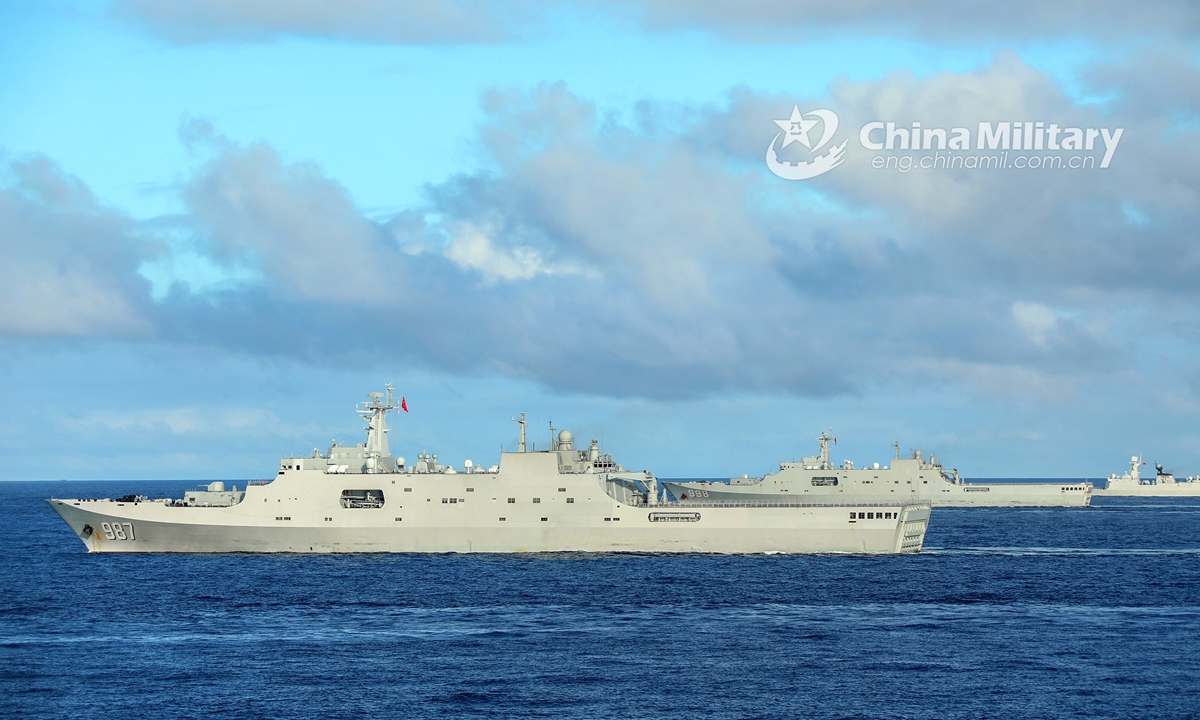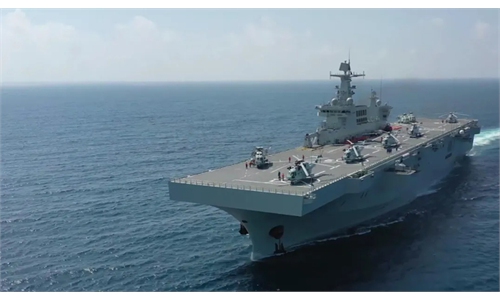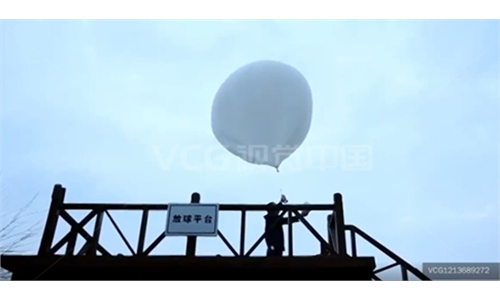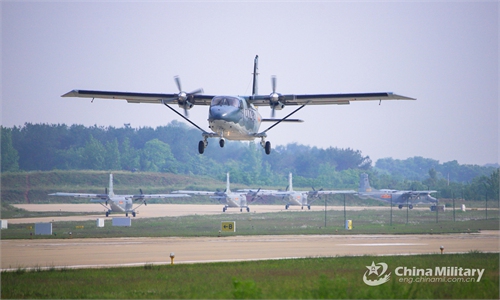
The amphibious dock landing ships Wuzhishan (Hull 987), Kunlunshan (Hull 998) and Changbaishan (Hull 989) attached to a landing ship flotilla with the navy under the PLA Southern Theater Command steam alongside in waters of the South China Sea during a maritime training exercise on November 18, 2020. Photo: eng.chinamil.com.cn
Warships of the Chinese People's Liberation Army (PLA) Navy wrapped up a series of combat alert patrols and far sea drills on Thursday that covered the South China Sea, the East Indian Ocean and the West Pacific, the PLA Navy announced after Australia falsely accused one of the Chinese ships of pointing a laser at an Australian patrol aircraft last month.
Under the command of the PLA Southern Theater Command Navy, the far sea joint training flotilla, consisting of the Type 052D guided missile destroyer Hefei, the Type 054A guided missile frigate Huangshan, the Type 071 amphibious landing ship Jinggangshan, the Type 903A comprehensive replenishment ship Honghu and vessel-borne helicopters, successfully completed its mission and returned to a port in Zhanjiang, South China's Guangdong Province on Thursday morning, the PLA Navy said in a press release on Thursday.
The flotilla set out for the mission from Zhanjiang on February 5 and carried out combat alert patrols and far sea drills, the press release said, noting that the 26-day mission saw the warships sailing through more than 7,900 nautical miles.
The far sea joint exercise is a regular procedure according to the PLA Southern Theater Command's annual training plan, is not aimed at any specific target and conforms to relevant international law and international practices, the PLA Navy said.
During the exercise, the flotilla finished the training program, optimized its tactics and laid solid foundations for the forces to carry out duties and missions, the press release said.
The PLA Navy's announcement comes after Australia's Department of Defense claimed on February 19 that two PLA Navy vessels sailed through the Arafura Sea to the north of Australia on February 17, transited through the Torres Strait and entered the Coral Sea. In the process, an Australian P-8A maritime patrol aircraft detected a laser emanating from one of the two PLA Navy vessels, illuminating the aircraft while in flight north of Australia.
Australia accused the Chinese move of "unprofessional and unsafe," and "could have endangered the safety and lives of the Australian personnel."
Images released by the Australian Defense Department show that the two PLA warships are the Hefei and the Jinggangshan which were taking part in the far sea joint training flotilla revealed on Thursday.
Senior Colonel Tan Kefei, a spokesperson of China's Ministry of National Defense, said on February 21 that Australia's statement is completely inconsistent with the facts, and it was the Australian aircraft that flew close to the Chinese vessels and provocatively dropped sonobuoys.
The PLA Navy's far sea drills have become routine, observers said. For example, a taskforce consisting of a Type 052D destroyer, a Type 054A frigate, a Type 071 amphibious landing ship and a Type 903A comprehensive replenishment ship, conducted a month-long joint drill in the South China Sea, the West Pacific and the Central Pacific in February 2019.
This combination of warships has become routine, as training is performed in a long range for an extended period of time and under realistic combat-oriented situations, a Chinese military expert who requested to remain anonymous told the Global Times on Thursday.
In the latest drill, Chinese warships dealt well with close-range tracking and monitoring by foreign vessels and aircrafts like those from Australia, the expert said, noting that this proved their capabilities and provided a great opportunity to train in realistic combat scenarios.
Judging from the types of ships that participated in the drills, the flotilla has high amphibious landing capabilities and can carry out traditional and non-traditional security missions, like humanitarian aid, anti-piracy, anti-terrorism, disaster relief and evacuation of nationals, experts said.




